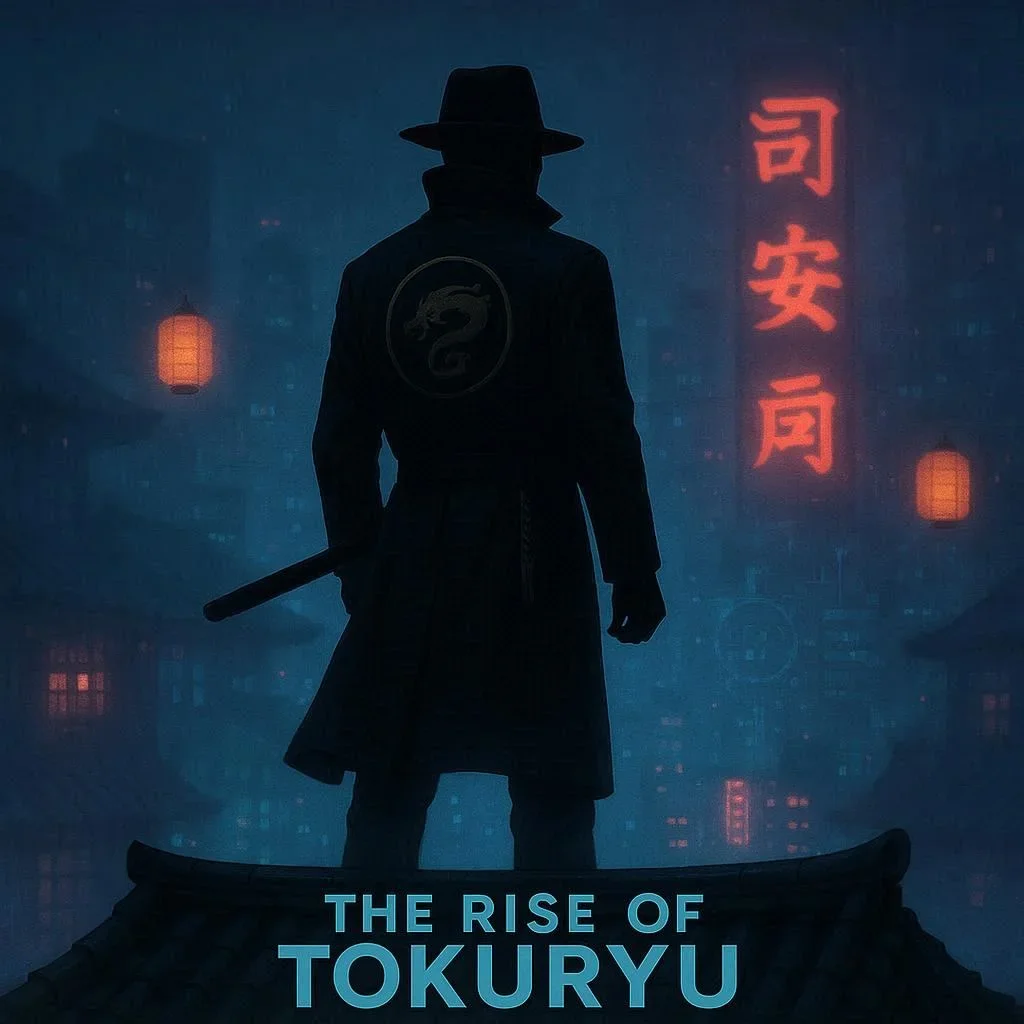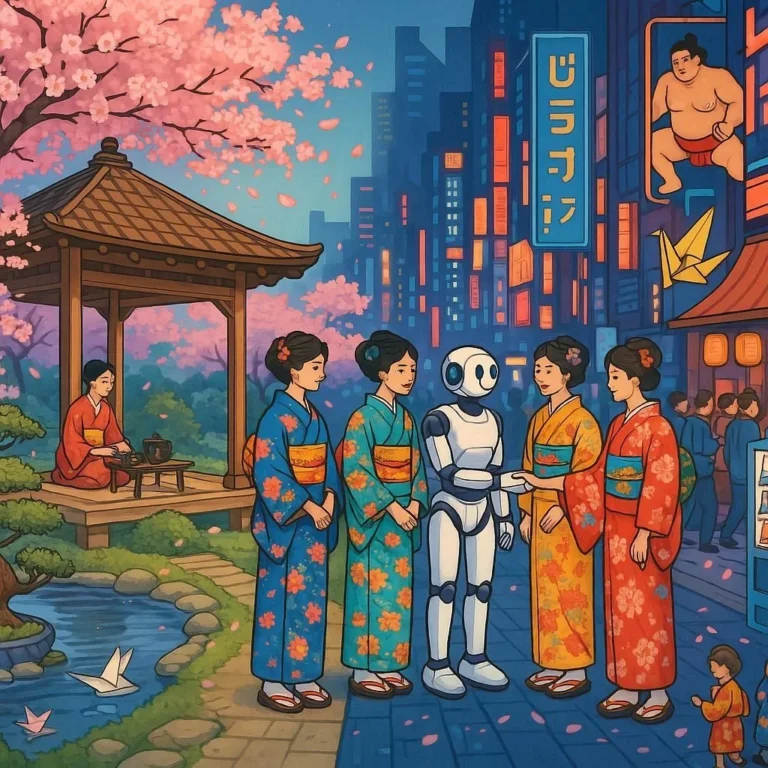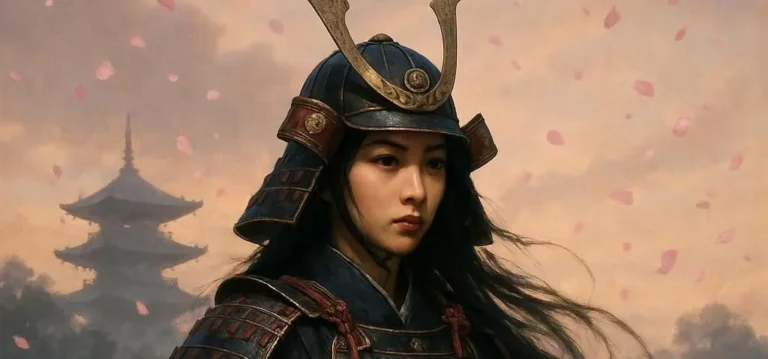507 views The Origins of the Yakuza: Japan’s Outlaws of Honor
The Yakuza, Japan’s famed organized crime syndicates, have long captured the public imagination. Their roots run deep into the annals of Japanese history, intertwining folklore, cultural rituals, and socio‑economic upheavals. Understanding how these “outlaws of honor” emerged not only demystifies an infamous group but also illuminates broader themes about power, culture, and adaptation in Japanese society.
1. Early Precursors: 16th‑Century Kagitsubo and the Birth of Social Mobility
While modern Yakuza organizations crystallized in the 19th century, their ancestral lineage can be traced back to the 16th‑century Kagitsubo (罽刺部). These were itinerant gangs of gamblers, thugs, and corrupt officials who roamed the Japanese countryside. Their notoriety sprang from two key traits:
- Elite “Yaku” Naming – Kagitsubo members often adopted the single kanji “Yaku” (弱, meaning “weak”) as a taboo that forbade them from dying of natural causes. It was an early form of an honor code, a lexicographic rebellion against shame instilled by feudal society.
- Street‑Craft Economies – Whether through illegal gambling, robbery, or protection rackets, Kagitsubo laid groundwork for formalized money‑making strategies that would later define the Yakuza’s financial operations.
During the Sengoku period, frequent warfare fractured social structures, creating a vacuum that Kagitsubo once filled. By exploiting this instability, they developed networks of influence that empowered them to control land, labor, and local politics.
2. The “Yakuza” Coinage: From the Raku‑Jar to the Modern Symbol
The term that would eventually coin Yakuza culture – “yakuza” – finds its origin in a peculiar 17th‑century gambling game known as Raku‑Zan (楽斑). In this game, a three‑handed deck contained marked cards. The player holding the two low‑value “yaku” cards earned the title of “Yaku‑Zen” (弱人), literally “weak human.” Over time, the name morphed into the flat‑lying yakuza, an emblem of solidarity and secrecy.
The modern Raku‑Jar, a porcelain jar embedded with a 4‑figured seal (four‑character code used in Yakuza initiation rituals), remains a hallmark of the organization. It serves two symbolic purposes:
- Initiation Seal – The four characters usually encode a patron’s vow of loyalty and an oath to conceal identity.
- Protective Magic – Believers hold that the jar wards off curses and attracts the blessings of the kami (Shinto spirits), embedding spiritual legitimacy in criminal practice.
3. Edo‑Period Pathways: The Rise of the Yōshin-ryū and the “Kamishibai” Gangs
Moving into the Edo period (1603‑1868), the Yakuza’s cultural codification accelerated. Two powerful social forces converged:
3.1 The Rise of the Yōshin‑ryū Karate
During the Tokugawa shogunate, the Yōshin‑ryū martial arts school grew alongside a network of samurai who desired personal defense outside the rigid class system. These samurai, often demoted during political turmoil, formed clandestine groups that practiced in secluded villages. Their struggle for status surprisingly overlapped with budding criminal enterprises.
How It Knits into Yakuza History
- Unseen Guard – The Yōshin‑ryū fighters evolved into muscle for early Yakuza titles, using martial skills to enforce territorial boundaries.
- Code of Conduct – The Bushido ethics of honor and loyalty seeped into Yakuza statutes, giving rise to the organization’s enduring reputation for an “honorable outlaw.”
3.2 “Kamishibai” and the Cultural Diffusion of the Gangs
The Kamishibai (神板) – a paper‑based street‑theater – offered a medium for covert communication between gang members. Cheap, portable, and visually seductive, these traveling narratives provided a method to advertise illicit services and share election codes while out of sight.
Stakeholders found this medium particularly useful for:
- **Disguising illicit transactions under the guise of “storytelling.”
- Spreading underground propaganda that challenged orthodox norms and cultivated a cult of personality.
As the Kamishibai became a national pastime, Yakuza groups leveraged it for brand building—the dramatization of a vendetta against oppressors blended into authentic fear‑fueled charisma.
4. Meiji & Taishō Encounters: Political Turbulence and Institutional Support
With the Meiji Restoration’s swift westernization (1868‑1912) and the subsequent Taishō era’s liberal movement, the Yasuda family’s arc began to shift from simple street thievery toward political lobbying and industrial ventures.
4.1 Regency to Modern State Interaction
- Political Leverage – Yakuza leaders aligned with local politicians, trading favors like “hit‑and‑run” for access to infrastructure projects.
- Resource Procurement – They secured smuggled commodities (alcohol, silk, and later, cigarettes) that bypassed expensive taxation.
4.2 Institutional Stand‑Alone: The “Gokuraku” Networks
By the 1920s, a coalition of Yakuza factions organized into a “Gokuraku” (極楽, “paradise”) cooperative. This collective structure appeared to serve three core strategies:
- Financial Diversification – Including gambling dens, prostitution, and trade monopolies.
- Political Semi‑Autonomy – Securing legal entry points into city councils and police districts via bribes and philanthropy.
- Ideological Cohesion – Through shared rituals like the “chō‑shū” code (spiritual, communal oath) they averted infighting.
5. Post‑WWII Proliferation: From Surplus to Seclusion
After the 1945‑1946 Japanese surrender, the Yakuza faced a two‑fold challenge: economic ruin and Western‑driven anti‑organized crime pushes. Yet, paradoxically, these conditions birthed what would become the modern Japanese crime syndicate.
5.1 Factory Districts & the “Maniament” Code
During Japan’s rapid reconstruction, the manufacturing boom shifted resources into tight control groups. Yakuza infiltration of those factories heralded a new era, with the “Maniament” code—a term coined by former police official Akira Nozaki—emphasizing “respectful compromise.” Under this doctrine, gangs engaged in legitimate contracting, building a blend of underground and lawful economies.
5.2 Cultural Reinterpretation – The “Bōdansha” Phenomenon
Post‑war, Yakuza sought legitimacy by positioning themselves as community guardians in “Bōdansha” neighborhoods—minority groups with economic black holes. Their interventions improved public safety, leading to popular acceptance from local citizens, especially in wartime-harmed municipalities.
6. The Modern Yakuza: Code Willingness and Global Footprint
By the late 20th century, Yakuza societies had evolved into structured corporations. Their distinctive characteristics manifest through:
- Hierarchical Rank – Fūzoku (裝: 令・称), the Yakuza ranking system that blends meritocracy and tradition.
- Colored Tattoos – The intricate “irezumi” (ink tattoos) not merely aesthetic; they encode a member’s story, allegiance, and blood‑ties.
- Corporate Fronts – Rubber‑suit offices, real‑estate ventures, and entertainment conglomerates provide legal fiscal fronts.
Internationally, Yakuza influence extends beyond Japan’s borders. They invest in global film productions, conduct cross‑border real‑estate operations, and collaborate with other transnational criminal networks like Mafia or Triads. Their reach in Southeast Asia, particularly in Malaysia and Philippines, showcases adaptive strategies for smuggling drugs, tunnel construction, and cyber‑crime.
7. Cultural Perception: “Outlaws of Honor” in Media & Public Lexicon
Despite its violent undertones, the Yakuza’s public image is underpinned by loyalty, courage, and a quasi‑noble sense of justice. Two significant factors have fueled this image:
7.1 Cinematic Narratives
Era‑defining films such as “Kimi no Nera” (1965) and “Tsuribaka Ninpō” (1976) cast Yakuza members as complex heroes. Their arsenals of “tattooed codes” and “honor vows” resonated with audiences seeking hero narratives within a reverent societal structure.
7.2 Visual Arts & The Tattoo‑Worn Symbol
The “tatsuro‑fuda,” a stylized, minimalist Yakuza tattoo, has transcended its origins to become a global art motif. Artists and fashion houses sample this motif, further cementing the “Outlaws of Honor” mythos in modern pop culture.
8. Current Challenges and the Future Pathology
With Japan’s contemporary legal crackdown—especially the Violence and Organized Crime Prevention Law (1991)—Yakuza groups confront new hurdles:
- Membership Restrictions – Criminal penalties inhibit recruitment; social stigma reduces new entrants.
- Legal Exposure – Anger—to reduce cost, many Yakuza attempt hige‑bang (重縫①1; a method of “human compression”) of their front enterprises.
- Digital Domain – Cyber‑crime and cryptocurrency mining present new arenas for Yakuza adaptation.
8.1 Resetting the Balance: Corporate vs. Criminal
Nonetheless, the Yakuza’s ability to merge corporate legitimacy with the loyalty network of structural reverence gives them a unique niche in modern Japan’s “shadow economy.” The future trajectory will likely involve:
- Diversifying to Legitimate Ventures – Real‑estate, hospitality, and cybersecurity firms.
- Strategic International Partnerships to circumvent law enforcement.
- Cultural Propagation via media, thus preserving narrative endurance.
9. The Bottom Line: The Hagaki Gene — An Unsung Legacy
At its core, the Yakuza’s origin story is less about violence and more about the resilient ability to adapt. This narrative reveals an ancient Japanese genetic code—the Hagaki gene—characterizing imaginative survival skills amplified through a cultural store of honor, craftsmanship, and clandestine cooperation.
Searching for answers about the Yakuza’s future involves inter‑disciplinary research: criminal psychology, economic anthropology, and cultural studies. By studying this unique blend of outside governance and internal code, we learn how a society can simultaneously punish and idolize its own “outlaws.”
Quick Takeaway
| Fact | Detail |
|—|—|
| Earliest roots | Kagitsubo in 16th‑century Japan |
| Key terms | Yaku‑Zen, Yakuza, Irezumi |
| Cultural link | Yōshin‑ryū martial arts, Kamishibai theater |
| Modern identity | Corporate front, tattoo codes, digital arm |
| Enduring myth | ‘Outlaws of Honor’ phrase |
For those fascinated by how a criminal organization becomes a cultural icon, the Yakuza’s history furnishes a profound case study—where honor meets outlaw, legend merges with street struggle, and ancient values forge pathways into the digital economy.





